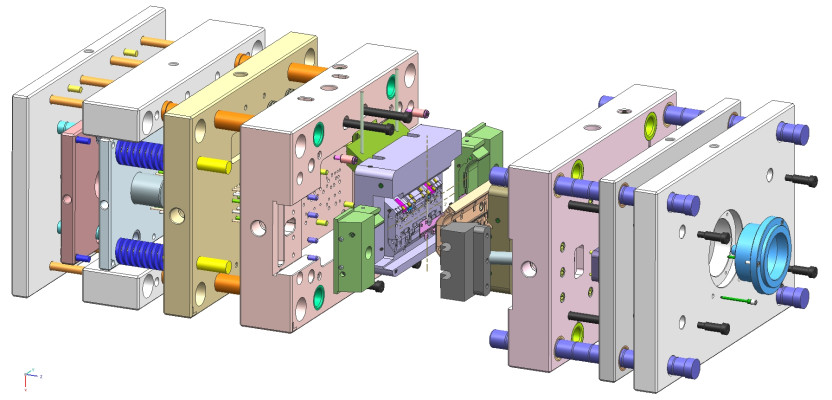Address
304 North Cardinal St.
Dorchester Center, MA 02124
Work Hours
Monday to Friday: 7AM - 7PM
Weekend: 10AM - 5PM
Gate Location

Make sure that the mold can (and will) be gated so that the thickness of the plastic from the gate toward the remote areas either remains constant or diminishes.To meet this requirement, the product designer may want to seek the assistance of an experienced mold designer.
Not all products adhere to this rule, but the product designer must understand the flow of plastic within the mold. The plastic pressure is highest near the gate, and,due to the restriction in the space between cavity and core, the injection pressure drops as the cavity space is filled with plastic farther away from the gate. This means that,by the time the plastic reaches an area where more plastic is required (such as in a thickening of the product),the pressure available to fill that area is low, and it will be more difficult to fill the cavity and to pack out the product to specification.
(Note that for all plastics,areas filled under low pressure will shrink more than those filled under high pressure, regardless of the shrinkage values. For example, a PP container may shrink 1.5 % near the gate in the center of the base,but it may shrink closer to 2.0 % near the rim, remote from the gate.)Of course,such more difficult products can be, and are being,molded satisfactorily, but they require higher injection pressures and higher melt temperatures, which may require stronger molds and heaver (larger) molding machines, which definitely will require more cooling time to bring the higher plastic temperatures down to where the product can be ejected. (Also, more energy is required to provide the additional heat for the melt and then to remove this additional heat during the cooling process.) In addition, the molding cycle will have to be extended accordingly.

Although there are often reasons why it appears that large changes in thickness are unavoidable, the designer should still consider whether they can somehow be avoided. Consider the following examples :

| Extreme thickness changes in A should be avoided; thicknesses almost constant in B but the product shape is changed; the thickness in C is uniform and the added rib keeps the product shape unchanged |
The shape shown above may be required for the purpose of the product, but it is obviously not a shape most suitable for molding,nor for equal strength. Instead, the designer can choose between Figs. B and C, according to the needs of the product. In Fig. B,the thickness remains more or less constant, staying well within the 25% “permitted” before affecting the moldability and product strength. The silhouette of the product, however, is changed. In Fig. C,the silhouette of the product is maintained, either by addling flanges at the ends of the step or by adding ribs of the shape shown.
Similarly, excessive thickness can often be avoided by coring the thick section from one side or from the other, whichever is more suitable for the product (and its appearance). In contemplating such coring out of any heavy section,it must be a basic consideration for the product designer to avoid a waste of plastic,to reduce the molding cycles, and to avoid excessive,uneven shrinkage, as well as sinks and voids,to save power and to increase productivity.
Obviously,Fig. A is bad design,since the change in thickness is far more than 100%. In Fig. B and C, however, either design is good, and the choice depends entirely on which better suits the desired product and,to some extent, on the appearance. In most cases,coring from the core side of the mold (the inside of the product) is preferable. The effect of coring will also help to keep the product on that side of the mold from which it will be ejected一usually,but not. Necessarily, the core side of the product.